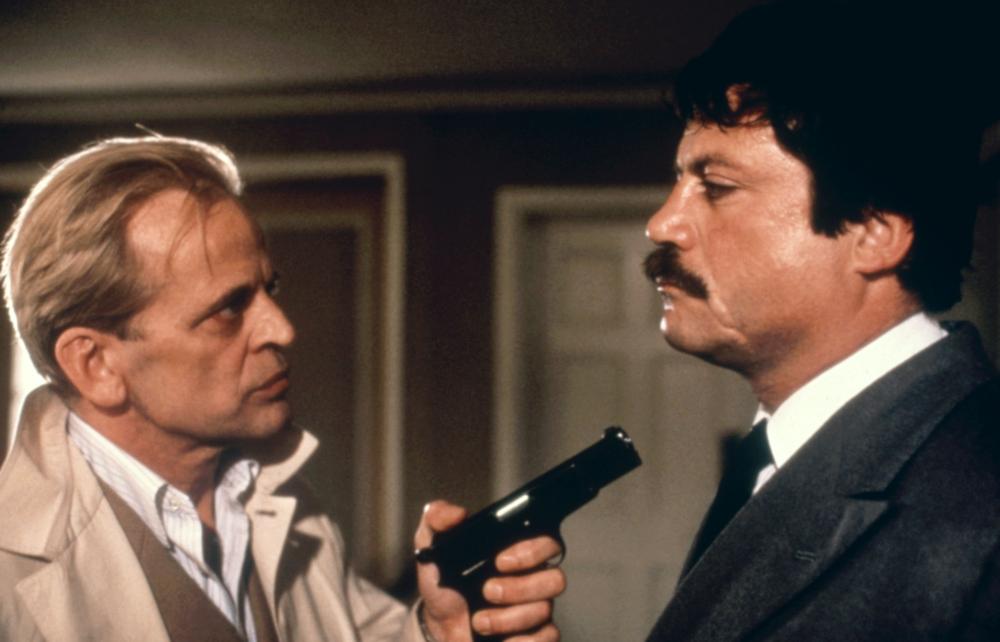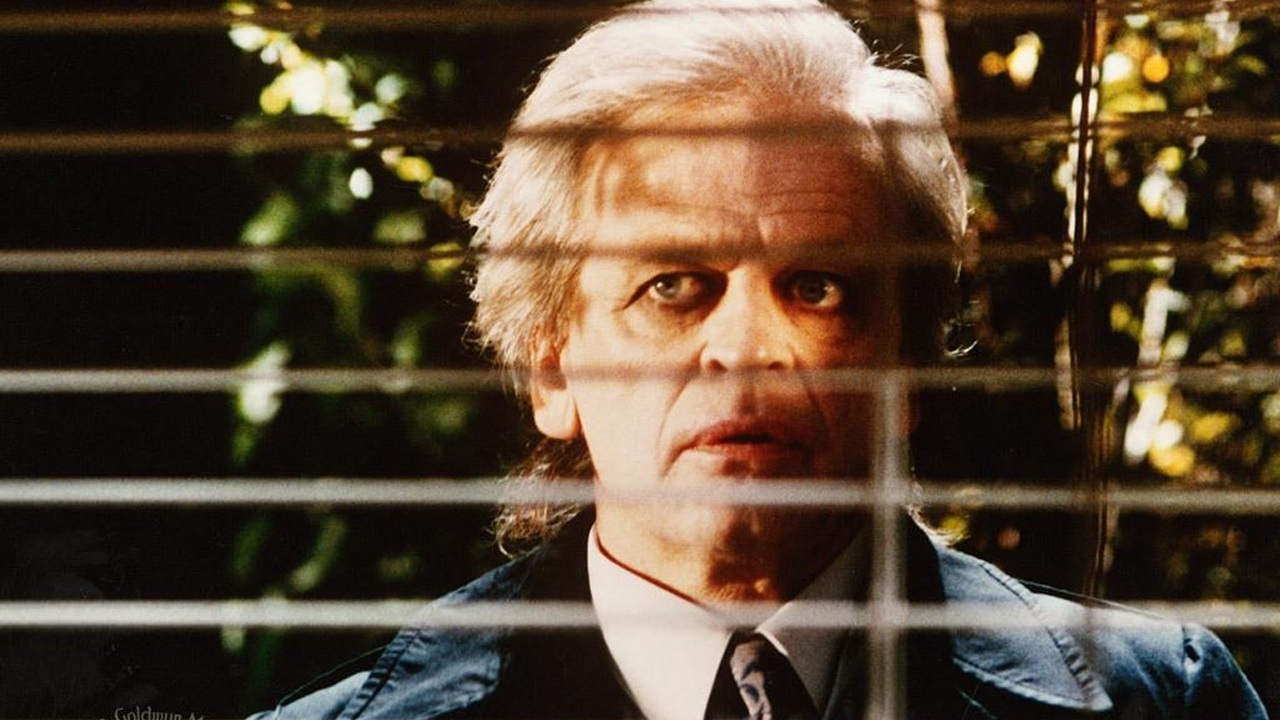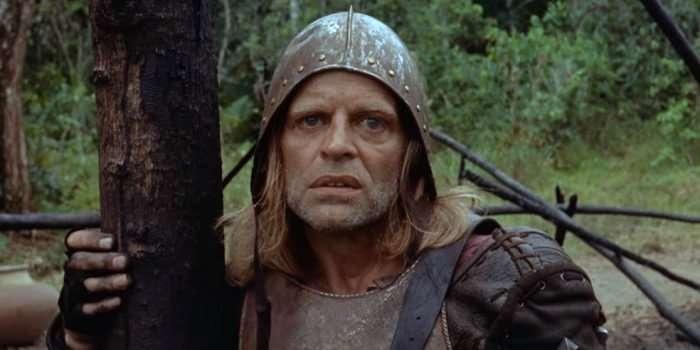Klaus Kinski Best Movies: A Look At An Unforgettable Screen Presence
Detail Author:
- Name : Dr. Noble Krajcik
- Username : skylar08
- Email : ipacocha@conn.com
- Birthdate : 2004-09-22
- Address : 527 Stoltenberg Views Apt. 275 West Bridget, TN 93868-8557
- Phone : +1 (559) 509-2333
- Company : O'Hara-Hills
- Job : Electrolytic Plating Machine Operator
- Bio : Quia eum ipsum vitae et reiciendis aut est. Nostrum provident ut dolores magni eos in. Et error quod sit quia magnam. Harum et modi unde soluta natus assumenda.
Socials
instagram:
- url : https://instagram.com/khowe
- username : khowe
- bio : Dicta accusantium ducimus neque. Et perferendis ut et. Neque iste qui iure ipsam molestiae sint.
- followers : 2178
- following : 2064
facebook:
- url : https://facebook.com/katlyn_howe
- username : katlyn_howe
- bio : Quis reprehenderit voluptas perferendis quas inventore nam.
- followers : 4209
- following : 1400
When you think about actors who truly left a mark, who brought a raw, almost frightening intensity to every role, Klaus Kinski is that, someone who immediately comes to mind. He was, in a way, an amazing character actor with distinctive facial features, and you know, he was best known for taking on any role available, no matter the quality. That, and his very, very violent temper. Yet, despite his challenging nature, his work, especially in his best movies, remains truly captivating for film lovers around the globe even today.
Kinski’s unique approach to acting, his unpredictable energy, and his piercing gaze made him an icon. He could portray a ruthless conqueror or a tormented vampire with equal, unsettling conviction. His performances often felt less like acting and more like a force of nature, which, arguably, is what made him so compelling to watch. So, if you're looking to explore the work of a truly singular talent, you're in for a treat.
This article will guide you through some of the most impactful and, you know, just really significant films that shaped his legacy. We'll look at the roles where his unique presence shone brightest, the ones that, in a way, cemented his place as one of the finest actors of his generation. It's almost like a journey into the mind of a performer who gave everything to his art, for better or worse.
Table of Contents
- Klaus Kinski: A Brief Look
- The Heart of His Work: Werner Herzog Collaborations
- Beyond Herzog: Other Notable Performances
- The Impact of a Unique Talent
- Frequently Asked Questions About Klaus Kinski
Klaus Kinski: A Brief Look
Klaus Kinski, born Klaus Günter Karl Nakszynski, was a German actor who, you know, left an indelible mark on cinema. He was known for his intense performances and, as a matter of fact, his often tumultuous personal life. His distinctive appearance and powerful acting style made him a sought-after presence in films across various genres, sometimes, you know, even in roles that might not have been the best quality.
His career spanned decades, and he worked with many different directors, but it's fair to say his collaborations with Werner Herzog are what many people remember most vividly. He was, arguably, a figure of contradictions: schizophrenic, cowardly, intolerant, and frenetically violent, yet, he was also, in some respects, one of the finest actors of his time. He truly was the burning heart of Herzog's best films, which, you know, says a lot about his artistic power.
Personal Details and Bio Data
| Full Name | Klaus Günter Karl Nakszynski |
| Known As | Klaus Kinski |
| Born | October 18, 1926 |
| Died | November 23, 1991 |
| Nationality | German |
| Occupation | Actor |
| Notable For | Intense performances, collaborations with Werner Herzog, distinctive facial features, violent temper. |
| Acting Style | Character actor, known for taking on any role regardless of quality, often bringing a frenetic and unpredictable energy. |
The Heart of His Work: Werner Herzog Collaborations
Klaus Kinski is, you know, best known for starring in five films directed by Werner Herzog from 1972 to 1987. This partnership was, quite literally, legendary, often marked by intense arguments and, as a matter of fact, a deep, if troubled, artistic understanding. Their work together produced some of the most memorable and, arguably, powerful films in cinema history. It's like, their combined energy just exploded on screen, creating something truly unique.
Aguirre, the Wrath of God (1972)
This film is, in some respects, often considered one of Kinski’s very best performances and, you know, a true highlight of the 1970s. In the 16th century, the ruthless and insane Don Lope de Aguirre leads a Spanish expedition in search of El Dorado. Kinski’s portrayal of Aguirre is, to be honest, nothing short of mesmerizing. He embodies the character's descent into madness with a terrifying conviction that, you know, just pulls you into the jungle's oppressive atmosphere.
The film captures the relentless drive and utter psychological breakdown of a man obsessed with glory and power. Kinski’s eyes, his movements, every single aspect of his being on screen, project a chilling intensity that, you know, makes Aguirre an unforgettable figure. It’s a performance that, arguably, defines his ability to command the screen with just his presence. You really feel the heat and the desperation, don't you?
Fitzcarraldo (1982)
Another powerful collaboration with Herzog, this film features Kinski giving, you know, one of the best male acting performances of the 1980s. The story follows an eccentric man who wants to build an opera house in the Amazon rainforest and, to do so, needs to transport a massive steamboat over a mountain. Kinski’s dedication to this role, as a matter of fact, was legendary, mirroring the character's own insane ambition.
The making of Fitzcarraldo was, reportedly, as dramatic as the film itself. There's that story, you know, about a crew member approaching Werner Herzog on the set, telling him that if he said so, he would kill Kinski. And Herzog, apparently, slept on it before deciding not to give the order. This anecdote, in a way, just highlights the sheer volatility of their working relationship and, you know, the extreme lengths they went to for their art.
Cobra Verde (1987)
This film, too, is part of the five Kinski-Herzog collaborations. While not as widely discussed as Aguirre or Fitzcarraldo, it still showcases Kinski's distinctive acting style. He plays a man who, you know, becomes involved in the slave trade in West Africa. The film, in some respects, explores themes of madness and colonialism, with Kinski’s performance adding his usual unpredictable energy to the narrative. It’s a very, very intense watch, for sure.
Beyond Herzog: Other Notable Performances
While his work with Werner Herzog is, you know, often what comes to mind first, Klaus Kinski had a long and varied career. He appeared in many films before and between his Herzog projects, showcasing his talent in different settings. You can, for instance, explore the complete filmography of Klaus Kinski on Rotten Tomatoes to discover every movie and TV show they have been credited in. It’s pretty extensive, actually.
Nosferatu the Vampyre (1979)
Directed by Werner Herzog, this film, while a Herzog collaboration, stands out for its unique take on the classic vampire tale. Kinski’s portrayal of Nosferatu is, in a way, truly chilling. Despite only appearing on the screen for a total of 17 minutes in a film that runs nearly two hours, Kinski’s performance, you know, just completely dominates the film and its story. His gaunt appearance, his unsettling movements, and his silent menace create a truly memorable monster.
He brings a profound sense of melancholy and, you know, a deep, ancient sadness to the vampire, making him more than just a creature of the night. It's a very, very different kind of horror, focusing on atmosphere and character rather than jump scares. Kinski, arguably, makes you feel the vampire's burden, which is a pretty impressive feat for such limited screen time.
Early Career Highlights
Some of his popular feature films from earlier in his career were, you know, 'Decision Before Dawn' (1952), 'Children, Mother, and the General' (1955), 'Winter in the Woods' (1956), 'The Avenger' (1960), and 'The Devil's Daffodil'. These films show his versatility before he became the intense figure many remember from the Herzog era. They give a glimpse into his development as an actor, how he, you know, started shaping his craft.
These earlier roles, in some respects, helped him hone the skills that would later make his more famous performances so impactful. He was, apparently, always a performer who committed fully to his roles, even in these less widely known pictures. It’s like, he was building up to those big, explosive parts, you know?
Voice and Performance Art
Beyond his film work, Kinski was also known for his unique vocal performances. He would, for instance, perform readings of classic literature. We know that Kinski spricht Strindberg und Baudelaire, and Kinski singt und spricht Brecht. He also performed Kinski spricht Hauptmann und Nietzsche. These performances, you know, show another side of his artistic expression, a very, very different kind of stage presence where his voice alone could captivate an audience.
This aspect of his work, arguably, reveals a depth beyond just his cinematic roles. It suggests a performer who was constantly exploring the boundaries of his art, using his voice and interpretation to bring new life to established texts. It’s, you know, pretty cool to think about him doing these readings, bringing his unique intensity to words rather than just actions.
The Impact of a Unique Talent
Klaus Kinski was, as a matter of fact, an amazing character actor with distinctive facial features who was best known for taking on any role available regardless of the quality, as well as his violent temper. He gives, you know, one of the best male acting performances of the 1970s with 'Aguirre' and the 1980s with 'Fitzcarraldo'. He is, arguably, a performer whose work continues to resonate with audiences and filmmakers today.
His ability to embody complex, often disturbing characters with such raw conviction made him a unique force in cinema. He pushed boundaries, challenged conventions, and, you know, left an undeniable mark on every film he touched. It’s almost like he infused a piece of himself into every role, making it unforgettable. You can, like, track the complete movie timeline of Klaus Kinski, including all film releases, career breakthroughs, and notable roles, and follow their journey from early performances to recent blockbusters and, you know, really see the breadth of his career.
His legacy is, in some respects, a testament to the power of pure, unadulterated performance, even when it came from a place of great personal turmoil. He was, to be honest, schizophrenic, cowardly, intolerant, and frenetically violent, but he was also one of the finest actors of his generation and the burning heart of Herzog's best films. His impact, you know, continues to be felt, inspiring discussions and new interpretations of his work. It’s a very, very lasting kind of influence.
Frequently Asked Questions About Klaus Kinski
What are Klaus Kinski's most famous movies?
Klaus Kinski is, you know, most famous for his collaborations with director Werner Herzog. His most well-known films include 'Aguirre, the Wrath of God' (1972), 'Fitzcarraldo' (1982), and 'Nosferatu the Vampyre' (1979). These films, arguably, showcase his intense and unforgettable acting style. People often remember these the most, as a matter of fact.
How many movies did Klaus Kinski make with Werner Herzog?
Klaus Kinski starred in five films directed by Werner Herzog. These collaborations, you know, happened from 1972 to 1987. The films were 'Aguirre, the Wrath of God', 'Fitzcarraldo', 'Nosferatu the Vampyre', 'Woyzeck', and 'Cobra Verde'. This partnership, in some respects, defined a significant part of both their careers.
Was Klaus Kinski difficult to work with?
Yes, Klaus Kinski was, apparently, known for his very, very violent temper and unpredictable behavior on set. The provided information notes that he was, to be honest, schizophrenic, cowardly, intolerant, and frenetically violent. There's even a story about a crew member on 'Fitzcarraldo' offering to kill Kinski for Herzog. This, you know, paints a picture of a very challenging individual, but also one who delivered powerful performances.
If you're curious to explore more about unique acting talents and their impact on cinema, you can, like, learn more about unforgettable performers on our site. Or, you know, if you want to see more articles just like this one, you could link to this page to discover other great movie picks. It's really worth seeing his films, you know, to understand the raw power he brought to the screen.



